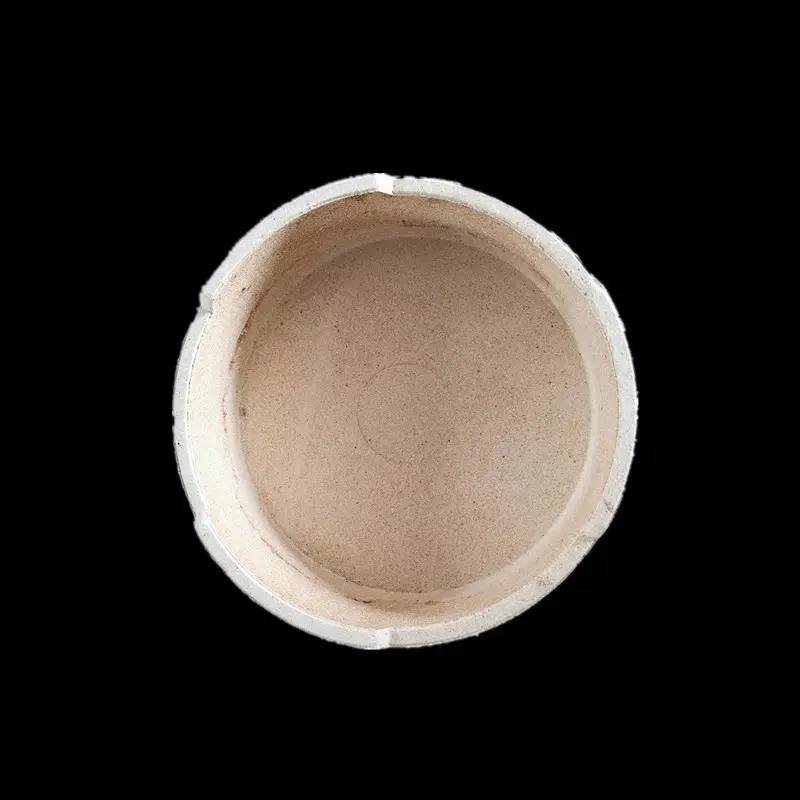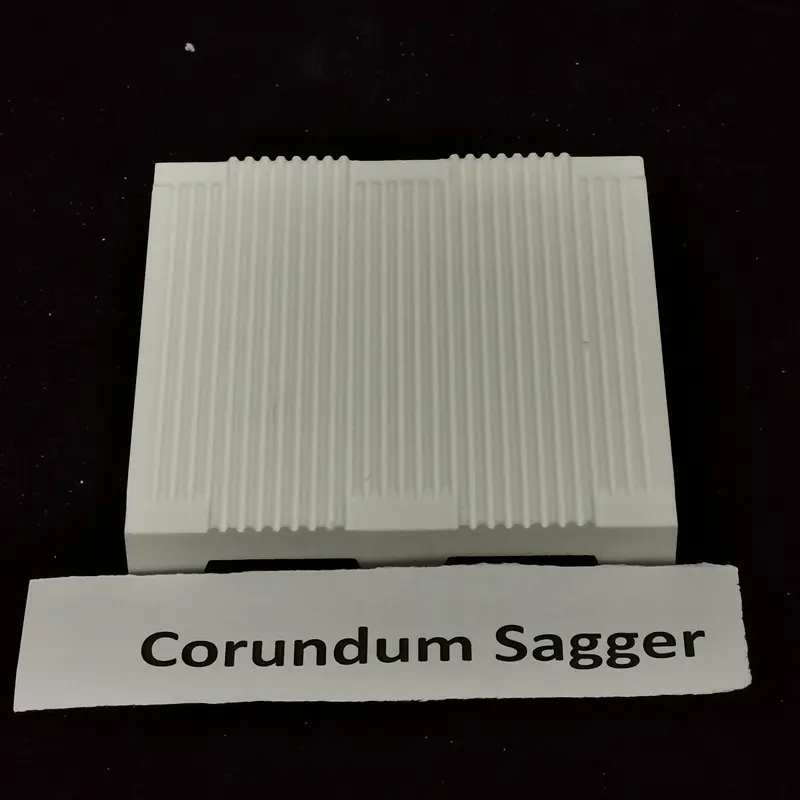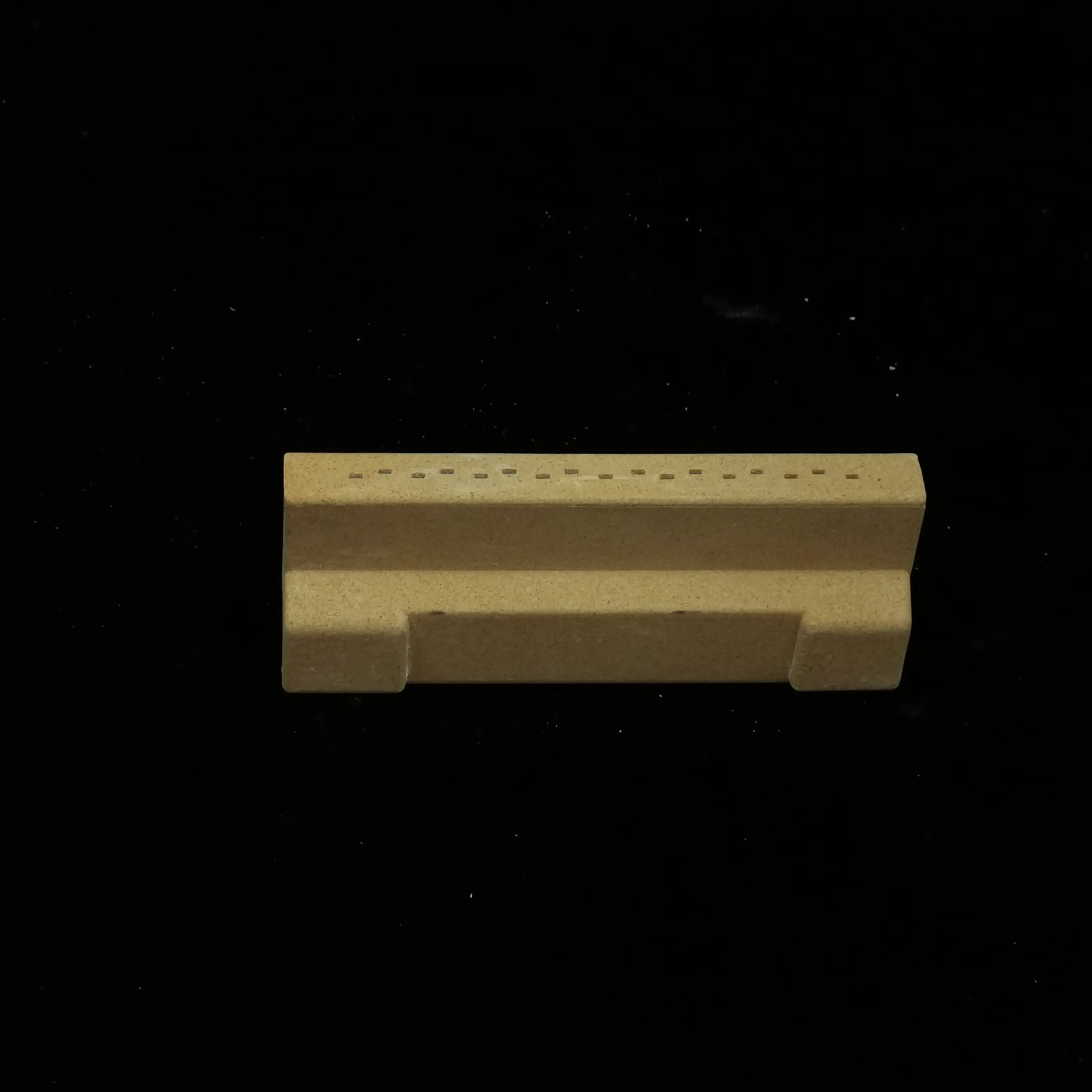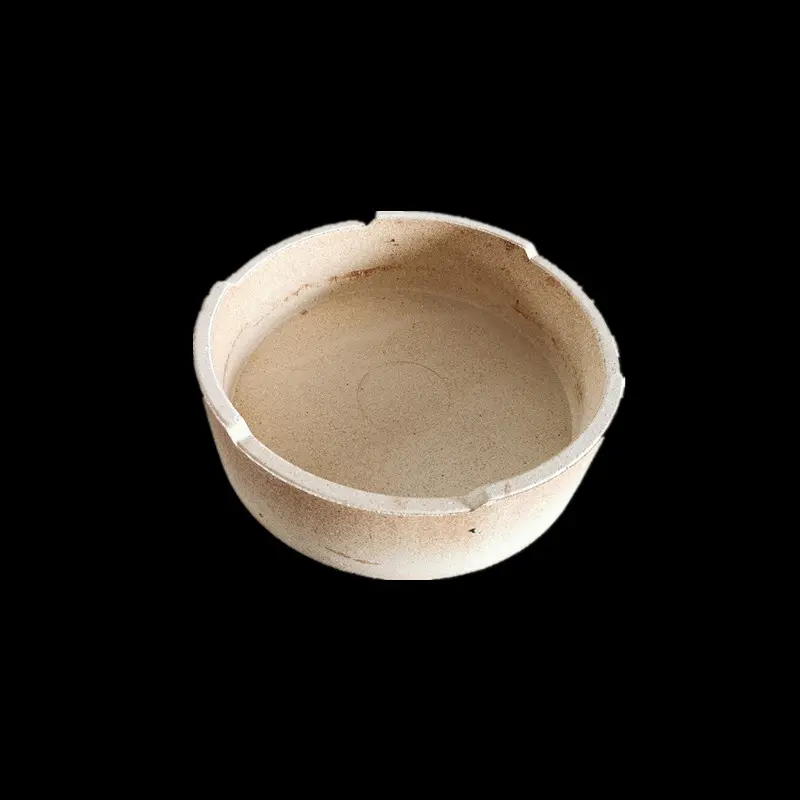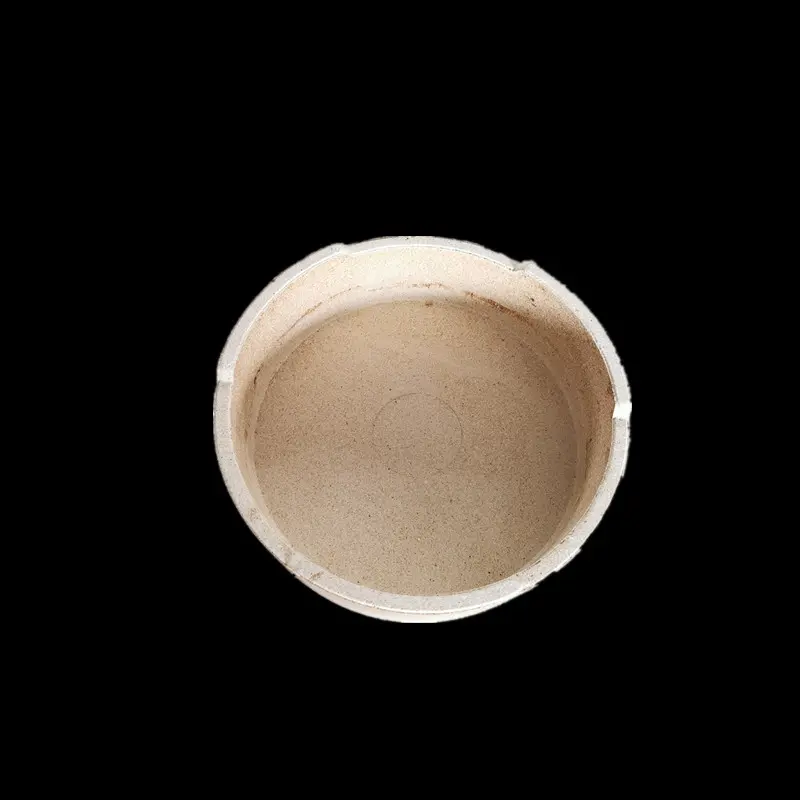Good thermal shock resistance Cordierite mullite sagger for pigment firing
Material Performance:
Cordierite-mullite saggers derive their exceptional performance from the synergistic properties of their two primary crystalline phases:
-
Outstanding Thermal Shock Resistance: This is the hallmark feature. Cordierite (2MgO·2Al₂O₃·5SiO₂) possesses an extremely low coefficient of thermal expansion (CTE). Mullite (3Al₂O₃·2SiO₂) contributes high-temperature strength and stability. The composite structure effectively resists cracking and spalling during rapid temperature changes inherent in kiln cycling (heating to 1100°C - 1400°C and subsequent cooling).
-
High Refractoriness: Mullite provides excellent resistance to deformation and creep at the elevated temperatures (typically 1100°C - 1350°C) required for developing stable, vibrant ceramic pigments.
-
Good Chemical Inertness: The alumina-rich composition offers good resistance to attack by many common pigment fluxes and volatile components generated during firing (e.g., borates, certain heavy metal oxides), minimizing contamination and ensuring pigment purity.
-
Moderate Mechanical Strength: While not as strong as some pure oxide ceramics at room temperature, the composite provides sufficient load-bearing capacity at high temperatures to support pigment batches through multiple firing cycles. Mullite enhances the high-temperature strength compared to pure cordierite.
-
Low Thermal Conductivity: This property helps maintain a more uniform temperature profile within the sagger and reduces energy losses.
Key Characteristics:
-
Long Service Life: Their superior thermal shock resistance directly translates to significantly longer lifespan (often 5-10 times or more) compared to traditional fireclay saggers or even pure cordierite under severe cycling. This drastically reduces downtime and replacement costs.
-
Reduced Contamination Risk: Enhanced chemical inertness minimizes the risk of sagger material contaminating sensitive pigment formulations, leading to consistent color development and quality.
-
Improved Process Efficiency: Resistance to cracking allows for faster heating and cooling rates in some cases, optimizing kiln throughput. Lower thermal mass (compared to denser refractories) also contributes to faster cycle times.
-
Dimensional Stability: Saggers maintain their shape well over numerous cycles, ensuring consistent packing density and heat transfer within the kiln.
-
Cost-Effectiveness: Despite a higher initial cost than basic fireclay, the dramatically extended lifespan and reduced losses from damaged ware and contamination make cordierite-mullite saggers highly cost-effective in the long run.
Primary Application: Pigment Firing
Cordierite-mullite saggers are the workhorse containers specifically designed for the high-temperature calcination and sintering processes involved in manufacturing inorganic ceramic pigments and stains:
-
Calcination: Used to hold raw material mixes (oxides, minerals) during initial high-temperature reactions to form the desired pigment crystalline phases.
-
Firing/Development Firing: Used to develop the final color, stability, and properties of the pigment particles at peak temperatures.
-
Types of Pigments: They are suitable for a wide range of pigments, including zircon-based (zircon vanadium blue, zircon iron coral), spinels (cobalt blue, chrome-tin pink), rutiles (chrome-tin yellow), and cadmium sulfoselenide reds/oranges (though care is needed with volatile components).
Conclusion:
Refractory cordierite-mullite saggers represent a sophisticated materials solution tailored for the harsh environment of high-temperature pigment production. Their unparalleled combination of thermal shock resistance, adequate high-temperature strength, chemical durability, and extended service life directly addresses the critical challenges of contamination, breakage, and frequent replacement associated with inferior kiln furniture. By ensuring process reliability, protecting pigment quality, and offering significant long-term operational savings, cordierite-mullite composites are the indispensable foundation for efficient and high-quality ceramic pigment manufacturing.


